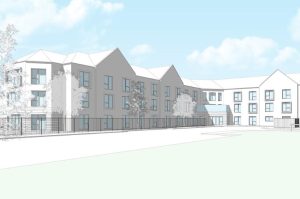Autumn Statement: £800m reform of stamp duty welcomed by region’s housebuilders

THE Chancellor’s final announcement of the Budget was his most political – an overhaul of the stamp duty regime.
The slab rate system creates big jumps when house prices go above a threshold, with the Chancellor quoting the £5,000 increase in duty when the purchase price of a £250,000 house by one pound.
“It’s time we fundamentally changed this badly-designed tax on aspiration,” he told the House of Commons. “In future each rate will only apply to the part of the property price that falls within that band – like income tax.”
The marginal rates are no tax on the first £125,000 paid, then 2% on the portion up to £250,000, 5% up to £925,000, 10% up to £1.5m and 12% on the rest.
Mr Osborne described it as a “fair, workable, lasting reform to the taxation of housing” and added: “98% pay less – and the whole reform represents a tax cut of £800 million per year. Only homes that cost just over £937,000 will see their stamp duty bill go up under this system – gradually to start with, rising to more substantial sums for the most expensive homes.”
Deloitte’s Andrew Coticelli, partner and head of tax in Yorkshire said: “The Autumn Statement 2014 will be remembered for the overnight change to stamp duty land tax. Perhaps encouraged by Scotland, the Chancellor has abolished the ancient ‘slab’ basis and moved to a progressive system.
“The new system applies to exchanges from 4 December and will result in lower tax bills for 98% of home buyers. Homes up to £937,500 will pay less stamp duty than under the old system but the most expensive homes will face a 12% charge over £1.5m. It’s a costly policy – some £800 million annually.”
Dave Sheridan, chief executive at national housing and regeneration company, Keepmoat, welcomed the changes to stamp duty but was disappointed not to hear anything about housing supply.
He said: “We have been calling for Stamp Duty reform for a long time, so we welcome the Chancellor’s changes. It is an inequitable tax and the bandings should have been updated years ago to reflect rising property prices. The new progressive system will help those who need it most – first and second time buyers – and instead will cost those looking to purchase £900,000+ homes who can afford the stamp duty.
“Unfortunately the chancellor made no mention of the lack of housing supply. Without more measures to increase this, house prices will continue to rise, pricing families out of getting on the housing ladder. We need the Government to take more steps to support housebuilding and, most importantly, to make sure that new houses are built on brownfield sites wherever possible.”
Darren Stubbs, managing director of Yorkshire-based housebuilder Stonebridge Homes, also approved of the stamp duty reforms.
He said: “We have plenty of evidence that homebuyers are still finding it hard to secure a mortgage and the situation only got worse following the mortgage market review, with the resulting stricter guidelines.
“The changes to stamp duty are a welcome boost to the housebuilding industry, saving the buyer of the average house around £4,000. With the Northern housing market making a much softer recovery than the South East, any incentive from Number 11 is welcome.”






